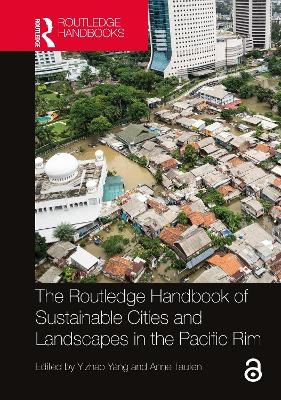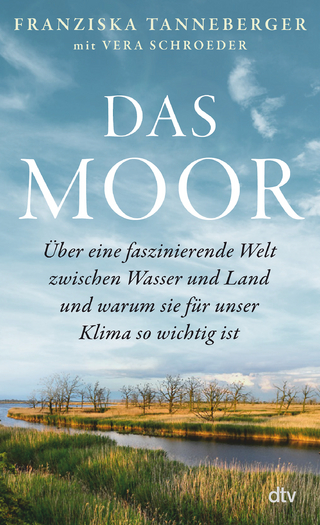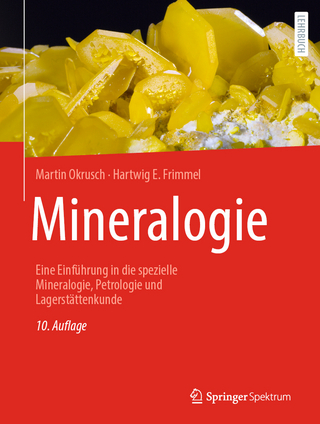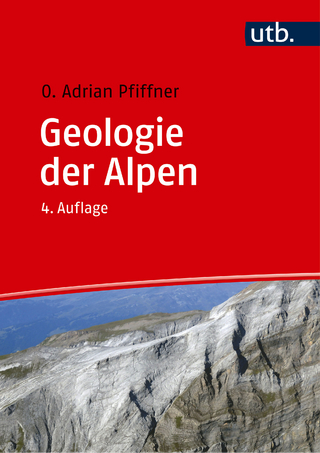
The Routledge Handbook of Sustainable Cities and Landscapes in the Pacific Rim
Routledge (Verlag)
978-0-367-47114-9 (ISBN)
This international edited collection will appeal to academics and students engaged in research involving landscape architecture, architecture, planning, public policy, law, urban studies, geography, environmental science, and area studies. It also informs policy makers, professionals, and advocates of actionable knowledge and adoptable ideas by connecting those issues with the Sustainable Development Goals (SDGs) of the United Nations. The collection of writings presented in this book speaks to multiyear collaboration of scholars through the APRU Sustainable Cities and Landscapes (SCL) Program and its global network, facilitated by SCL Annual Conferences and involving more than 100 contributors from more than 30 institutions.
The Open Access version of chapters 1, 2, 4, 11, 17, 23, 30, 37, 42, 49, and 56 of this book, available at http://www.taylorfrancis.com/books/e/9781003033530, have been made available under a Creative Commons Attribution-Non Commercial-No Derivatives 4.0 license.
Yizhao Yang is an Associate Professor at the School of Planning, Public Policy and Management, University of Oregon. Her research interests focus on the relationships between the environment and people’s behavior and wellbeing. She also studies global sustainable urban planning and design, particularly in countries in East Asia, with an aim to explore how place-making knowledge and practices can be transferrable between different cultures and countries. Dr. Yang is a member of the International Steering Committee of the Sustainable Cities and Landscapes Hub for the Association of Pacific Rim Universities. She also serves on the advisory board of the Asia-Pacific Mayors Academy organized by UN ESCAP. Anne Taufen is Associate Professor in the School of Urban Studies at UW Tacoma. Her research focuses on equitable governance, port city infrastructures, and the social-ecological networks of urban regions. Dr. Taufen’s interdisciplinary approach to urban waterfronts and climate justice draws on graduate training in Social Ecology (University of California Irvine) and Government Administration (University of Pennsylvania). She serves as a member of the Institute for Innovation and Global Engagement at UW Tacoma; as a faculty instructor for the Asia-Pacific Mayors Academy through APRU; and on the Steering Committee of the SCL hub, co-leading a working group on sustainable waterfronts.
1 Sustainable cities and landscapes: cultivating infrastructures of health Anne Taufen and Yizhao Yang 2 The APRU Sustainable Cities and Landscapes Hub: a platform for collaborative knowledge production and action Bart R. Johnson and Yekang Ko 3 Learning spaces of policy mobility for sustainable cities and landscapes: the role of researchers and educators Yizhao Yang, Anne Taufen, and Rachel Tochen SECTION 1 Vulnerable communities, resilience, and climate justice 4 Introduction to Section 1: vulnerable communities, resilience, and climate justice Chingwen Cheng 5 Understanding vulnerability in cities: perspectives from APRU Vulnerable Communities working group participants Chingwen Cheng, Stephanie Pincetl, and Louise McKenzie 6 Flood vulnerability assessment in Marinduque, Philippines using fuzzy logic and principal component analysis Arnold R. Salvacion, Ma. Catriona E. Devanadera, Fevi Rose C. Paro, Aaron Julius M. Lecciones, and John Ceffrey L. Eligue 7 Integrated water management model for coastal resilient city planning for hydro-meteorological hazards – a case study of 2015 Chennai Flood (India) Indrajit Pal and S. Suresh 8 Creating flooding resilience in buildings for aging communities in Taiwan George C. Yao, Shih-Ming Chen, Chingwen Cheng, and Wenjyun Chou 9 Re-imagining our ancestors: dispossession, resilience, and volatile nature Adam Bobbette 10 Future cities Heejin Choi SECTION 2 Food and nutrition security 11 Introduction to Section 2: food and nutrition security Robert Dyball 12 Biodiversity and food security in a circular economy John Schooneveldt 13 Reimagining urban agriculture for sustainable urban futures: education, health, and urban commons Jacques Abelman, Chun-Yen Chang, Shenglin Elijah Chang, Jeffrey Hou, Shih-Han Hung, Pei-Hsuan Lai, and Mathew Pryor 14 Novel horticultural adaptations to climate and their unique landscapes Tanya Court and Joshua Zeunert 15 A framework for studying the sustainability of urban food security and nutrition across scales Bronwyn Wilkes 16 Food and nutrition security across three scales Robert Dyball, Bronwyn Wilkes, Federico Davila, and John Schooneveldt SECTION 3 Cities and biodiversity 17 Introduction to Section 3: cities and biodiversity Jennifer Rae Pierce 18 Operationalizing urban biodiversity: a guide for integrated action Jennifer Rae Pierce, Melissa A. Barton, Isaac Thomas Brown, Bart R. Johnson, Patrick F. Mooney, Puay Yok Tan, Sohyun Park, Kelsey Jessup, Marina Alberti, Ryan J. Harrigan, and Michael Yun 19 The Satoyama initiative for urban-rural connectivity at the landscape scale William Dunbar, Juan Pastor-Ivars, and Evonne Yiu 20 Accounting for cities’ impacts on biodiversity in the global commons Jennie Moore and Meidad Kissinger 21 Engaging underserved urban audiences in environmental conservation Claudia P. Diaz Carrasco, Maria G (Lupita) Fabregas Janeiro, and Sabrina L. Drill 22 Urban aquatic ecology, restoration, and fishing on the Los Angeles River: making it just blue enough Sabrina Drill and Jason Post SECTION 4 Water 23 Introduction to Section 4: water Ken P. Yocom 24 Redrawing our urban waters: merging design, law, and policy in advancing distributed water systems Brook Muller, Adell Amos, Joshua F. Cerra, Chingwen Cheng, David L. Feldman, Tatum Lau, Noelwah R. Netusil, and Erik Porse 25 Resilience-based planning and management of sustainable coastal cities and landscapes using spatial-temporal simulations Jinhyung Chon 26 Reservoir urbanism in Shenzhen Xiaoxuan Lu 27 Living on water: amphibious communities in the Amazon Rainforest Leann Andrews, Rebecca Bachman, and Susan Paredes Fernandez 28 A classic case of the struggle to control a river: is it wise to sacrifice the social and ecological functions of the river for flood safety? Kuei-Hsien Liao and Tsz Yan Lee 29 Watershed thinking: landscape-city practices Nancy D. Rottle SECTION 5 Renewable energy landscapes across the Pacific Rim 30 Introduction to Section 5: renewable energy landscapes across the Pacific Rim Makena Coffman and Yekang Ko 31 Prospects for acceleration of socio-technical transitions for deep decarbonization Brendan F.D. Barrett, Hiroshi Ohta and Gregory Trencher 32 Understanding and monitoring the political valuation of renewable energy transitions using a model of perceived social acceptability Robert G. Ribe 33 ‘Conflicts of Greens’ in renewable energy landscapes: case studies and a planning framework Yekang Ko, Makena Coffman, Dustin Mulvaney, Andrea Copping, Hsiao-Wen Wang, and Brendan Barrett 34 Co-location for co-benefits: the SWOC analysis of brightfields and agrivoltaics Tom Fiorelli, Yeongseo Yu, Yekang Ko, Kirk Dimond, and Makena Coffman 35 Site design for Solar PV within the urban boundary Kirk Dimond 36 Solar Power and the just transition Dustin Mulvaney SECTION 6 Greenspace for healthy living 37 Introduction to Section 6: greenspace for healthy living Sara Barron, Chun-Yen Chang, and Shih-Han Hung 38 People in changing landscapes: trends and interventions in fostering human–nature interaction Shih-Han Hung, Sara Barron, Yu-Chen Yeh, and Michelle Cheung 39 Green space planning and policies for promoting public health Po-Ju Chang, Ang Yeh, and Mi-Geng Wu 40 Research tools for investigating the relationship between environment and human health Yu-Ping Tsai, Sung-Yueh Liu, and Chun-Yen Chang 41 From research to practice: bridging the “knowledge-action” gap Shih-Han Hung, Chih-ting Lee, Yu-Hsin Tung, Yu-Ping Tsai, Chun-Yen Chang and Puay Yok Tan SECTION 7 Urban design and place making 42 Introduction to Section 7: urban design and place making Paola Boarin and Linda Corkery 43 Urban green infrastructure as landscape-led planning: from the region to the streetscape Linda Corkery 44 Remaking public space for cooler, greener outcomes: a case study from Western Sydney Louise McKenzie 45 Delivering environmental sustainability outcomes in medium-density neighborhoods in Aotearoa New Zealand: a post-occupancy evaluation Paola Boarin and Errol Haarhoff 46 Architectural integration of solar energy at the urban scale: case studies and potentials Alessandro Premier 47 Enhancing well-being and housing satisfaction through density: resident perceptions in Auckland, New Zealand Errol Haarhoff and Paola Boarin 48 Everyday urbanism in high-density cities Mathew Pryor SECTION 8 Smart sustainable cities 49 Introduction to Section 8: smart sustainable city initiative and its social and economic implications Mohsen Mohammadzadeh 50 Smart Cities in the Pacific Rim: a mapping of urban evolution in the Pacific Son Phung, Alice Chang-Richards, and Mohsen Mohmmadzadeh 51 Envisioning urban commons as civic assemblages in the digitally augmented city: a critical urbanism exploration of counterhegemonic individuation in the age of networked translocalism, multi-associative transduction and recombinant transculturalism Manfredo Manfredini 52 Fostering resilient and smart cities to enhance sustainable urban development Mohammed Ali Berawi, Bambang Susantono, and Mustika Sari 53 Evaluating the impacts of the digital economy on land use planning Elham Bahmanteymouri 54 Rethinking streets with disruptive forces: how new mobility and responses to COVID advance street design Marc Schlossberg, Rebecca Lewis, Clare Haley, and Aliza Whalen 55 Does disruptive mobility drive urban sustainability? Two possible scenarios for Auckland, New Zealand (Aotearoa) Mohsen Mohammadzadeh SECTION 9 Co-production for sustainable development 56 Introduction to Section 9: co-production for sustainable development Anne Taufen 57 Engaged scholarship and co-production: the role of higher education institutions in urban sustainability – A Pacific Rim perspective Jennifer Marie S. Amparo, Clarice C. Pulumbarit, Ma Charisma T. Malenab, Ron Jay P. Dangcalan, Maria Emilinda T. Mendoza, Emilia S. Visco, and Carla Edith G. Jimena 58 Structural erasure of Japanese Americans in Pre-WWII Tacoma, WA: working to imagine alternative futures Lisa M. Hoffman and Mary L. Hanneman 59 Chicana neighborhood activism: gender, race, and sustainability Gerard Francisco Sandoval, Citlali Sosa-Riddell, and Adaljiza Sosa-Riddell 60 Governing urban integration in china’s land expropriation-induced resettlement neighborhoods: a Shanghai case study Shuping Zhang 61 Evaluating the United Nations Habitat guiding principles for urban-rural linkages: a case study of Chengdu Sara Padgett Kjaersgaard and Yizhao Yang 62 The co-production of risk knowledge: initiatives emerging from super Typhoon Haiyan Eulito V. Casas Jr., Miah Maye M. Pormon, Mary Jean P. Yanger, and Raul P. Lejano 63 An Indigenous Feminist lens: dismantling the settler-colonial narratives of place-based knowledges in a climate justice world Michelle Montgomery 64 Making sense of an emergent crisis: the case of the pandemic urbanism symposium Evan H. Carver, Peter T. Dunn, Katherine Idziorek, Lan T. Nguyễn, and Elizabeth Umbanhowar Index
| Erscheinungsdatum | 18.03.2022 |
|---|---|
| Reihe/Serie | Routledge Environment and Sustainability Handbooks |
| Zusatzinfo | 43 Tables, black and white; 45 Line drawings, black and white; 67 Halftones, black and white; 112 Illustrations, black and white |
| Verlagsort | London |
| Sprache | englisch |
| Maße | 174 x 246 mm |
| Gewicht | 453 g |
| Themenwelt | Naturwissenschaften ► Geowissenschaften ► Geografie / Kartografie |
| Technik ► Architektur | |
| ISBN-10 | 0-367-47114-0 / 0367471140 |
| ISBN-13 | 978-0-367-47114-9 / 9780367471149 |
| Zustand | Neuware |
| Informationen gemäß Produktsicherheitsverordnung (GPSR) | |
| Haben Sie eine Frage zum Produkt? |
aus dem Bereich


